How to Identify Trees Beyond the Leaves
Ever wanted to get to know the trees in NYC a little better? Most people only look at a tree’s leaves to try to identify it, but there are plenty of trees in the city that are easy to recognize just by looking at their bark, buds, and branches. And you can even use these clues in the winter, when trees usually go dormant and lose their leaves!
Generally, you can look for these four features of a tree to identify its species:
Bark
Inside a tree’s trunk, its tissues move water and nutrients between the roots and leaves. The outermost layer of bark protects these living tissues, much like our skin protects our bodies. But unlike our skin, bark is actually made of dead cells, meaning it can’t expand much, so you’ll see cracks form as the tree grows. These cracks look different depending on the type of tree and environment. And the bark can come in a variety of colors, like brown, white, and even green. Looking at a tree’s bark can help you identify tree species at any time of year!
Let’s take a look at some of the most distinctive barks in New York City:
London Planetrees
The London planetree, the most common street tree in New York City, also has some of the most distinctive bark — a camouflage of green, yellow, white, and brown.

The bark not only gives the London planetree a striking appearance, it also helps them accomodate increases in their size as these trees can be very fast growing.
Paper Birch Trees
Another bark that’s easy to spot is birch bark!
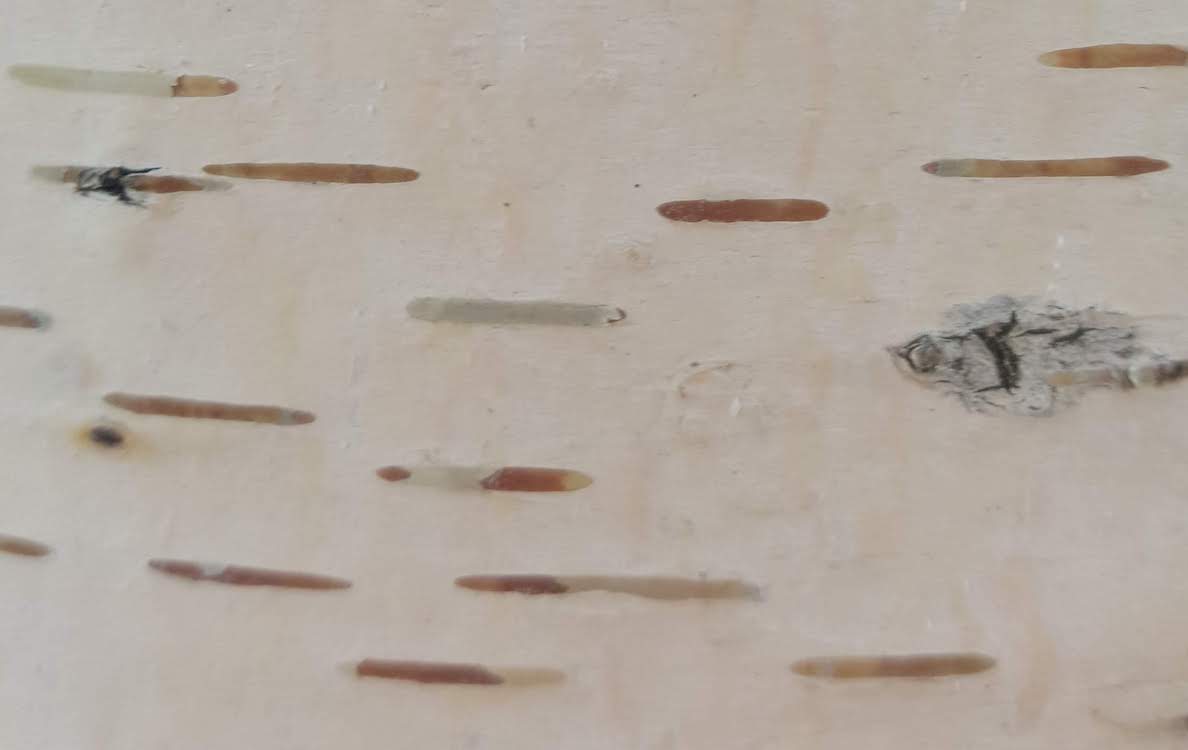
The bark of birch trees is often white, flat, and smooth. In certain types of birch, the bark peels away in horizontal sheets. These sheets can be used for paper, baskets, building, and fire-making. But to make sure our trees stay healthy, please leave the bark on our birch trees!
Cherry Trees
Even without its famous white and pink flowers, you can still spot a cherry tree by its dark bark dotted with horizontal lines.
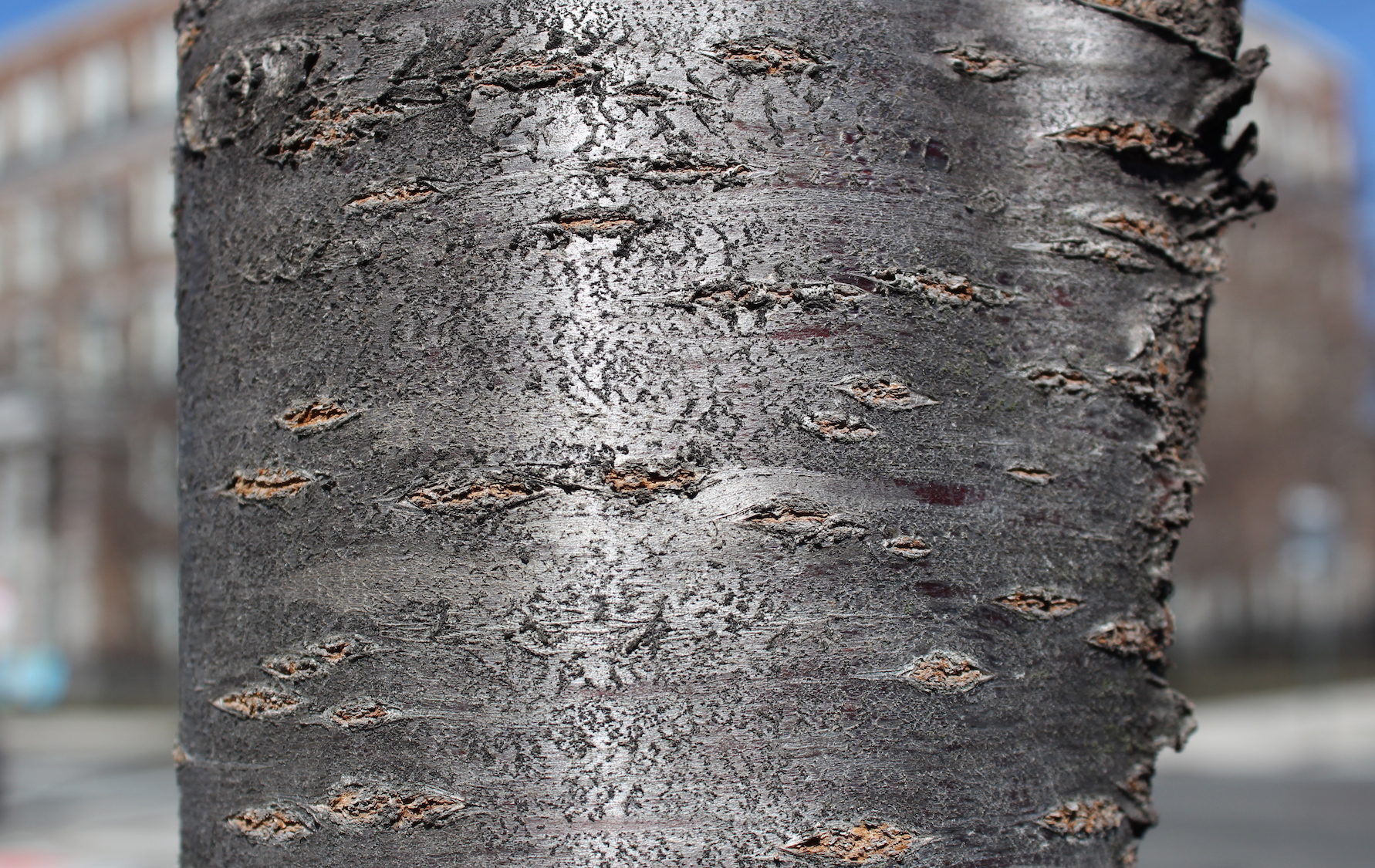
These lines, called lenticels, allow the tree to exchange oxygen created through photosynthesis with carbon dioxide and water vapor from the air. Like many trees, cherry bark can also change with age, going from relatively smooth to a ridged or fissured appearance.
Crepe Myrtle Trees
Crepe myrtle trees have multiple trunks covered in shades of cream, peach, and cinnamon.
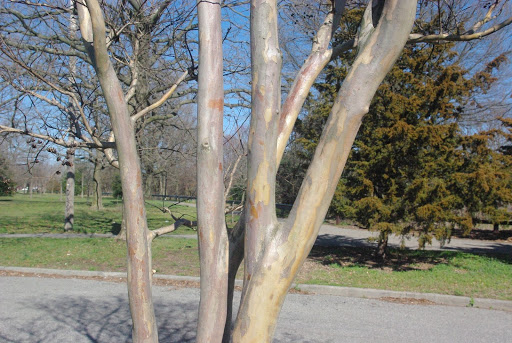
This patchwork appearance happens as the tree grows and sheds bark from previous years. These trees can be spotted in garden plantings inside Central Park, McCarren Park, Hudson River Park, and Rockaway Beach.
Buds
Buds aren’t just the people you look at trees with, they’re also another way to figure what trees you’re looking at! At the end of the summer, trees grow miniaturized versions of next year's leaves, called buds.
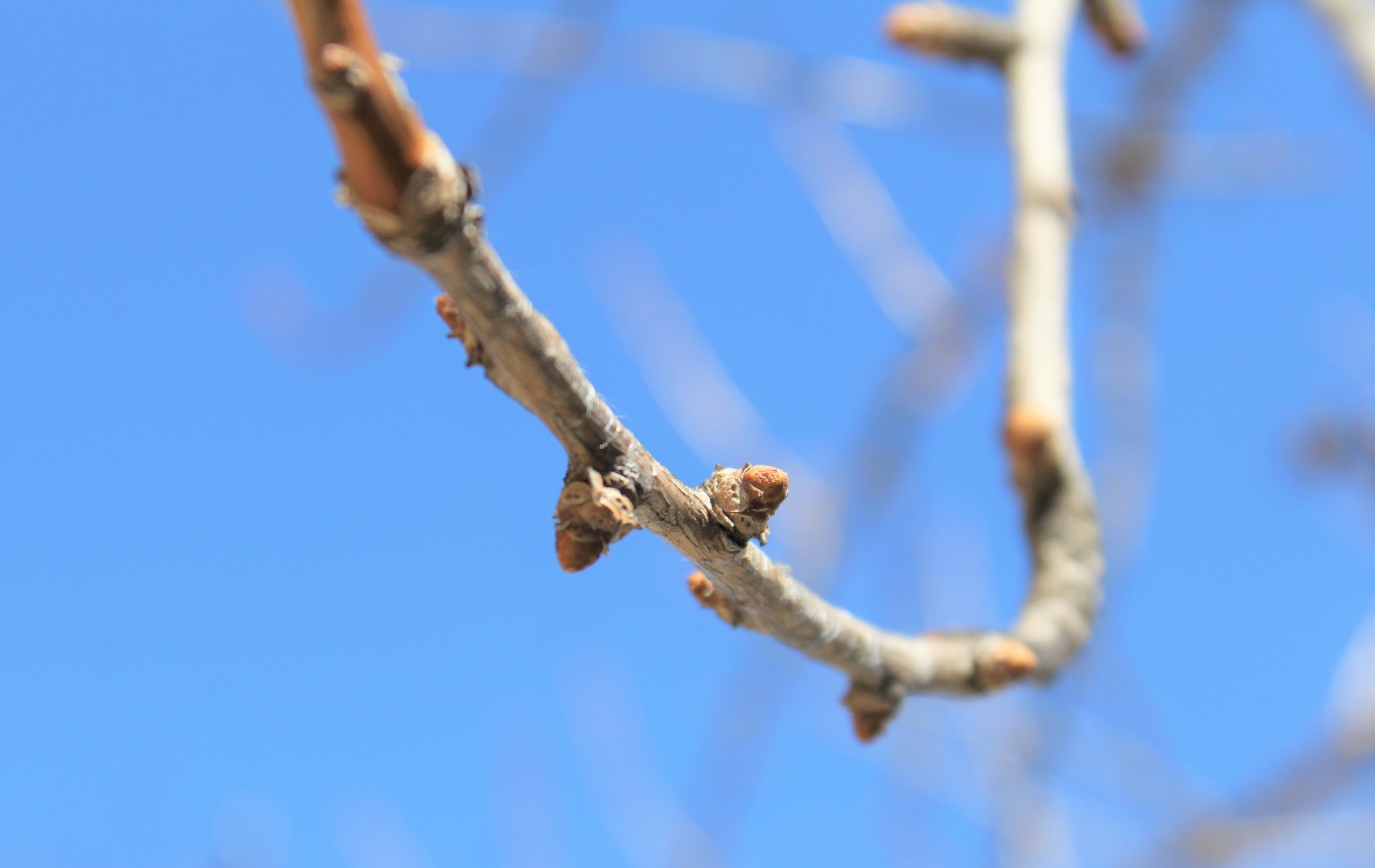
They are covered by leathery scales that protect these young leaves until they are ready to really start growing the next year. Buds can be found at the tip and along the sides of smaller branches and twigs on a tree.
Some tree buds are more distinct than others:
Ginkgo Trees
While often recognized by their triangular leaves or smelly berries, ginkgo trees also have buds with a distinctive knobby appearance.
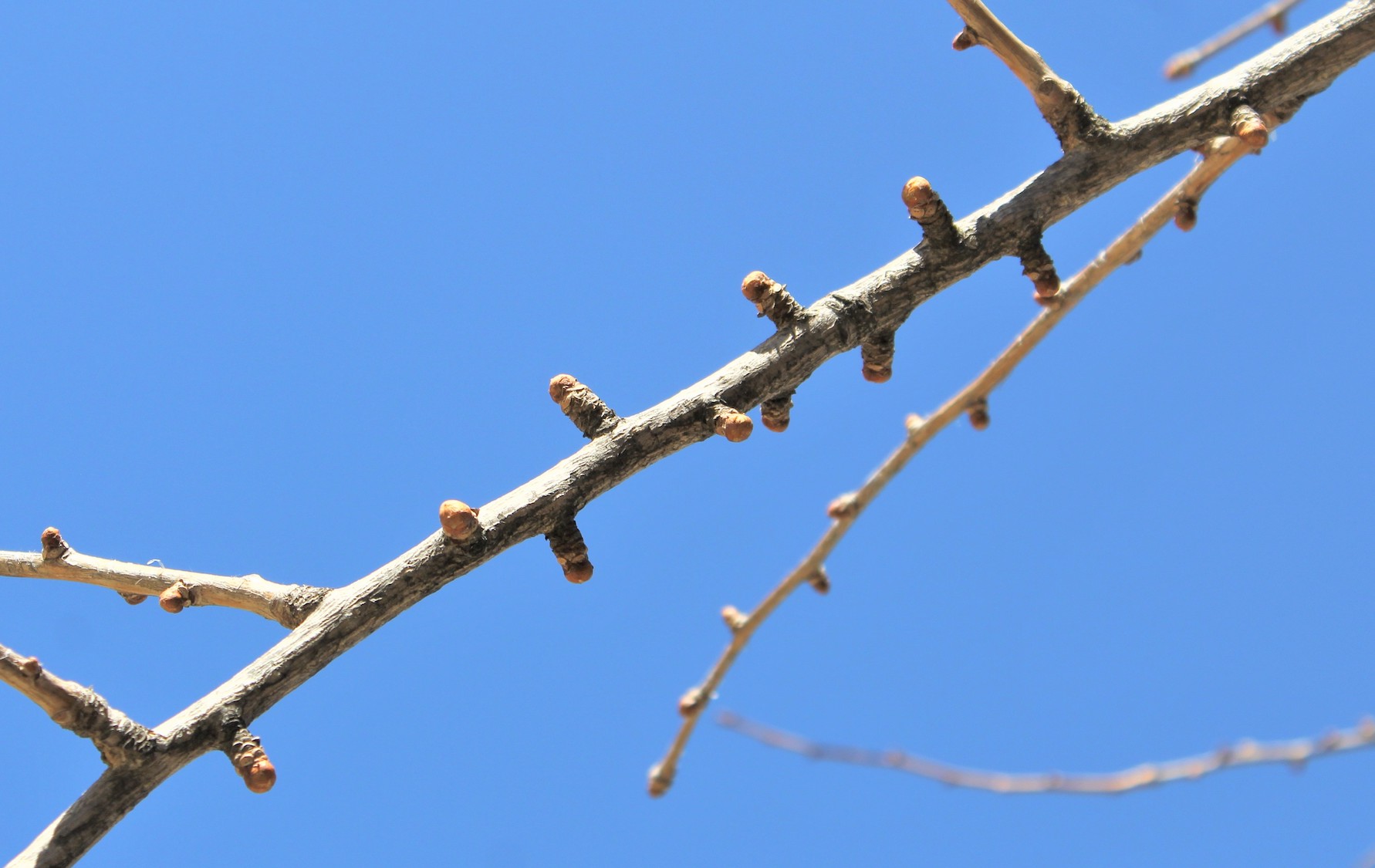
Ginkgo buds grow directly on top of the remains of last year's leaf buds, slowly building these stubs over time.
Ash Trees
Ash trees are easy to identify due to their large, dark dome-shaped buds.
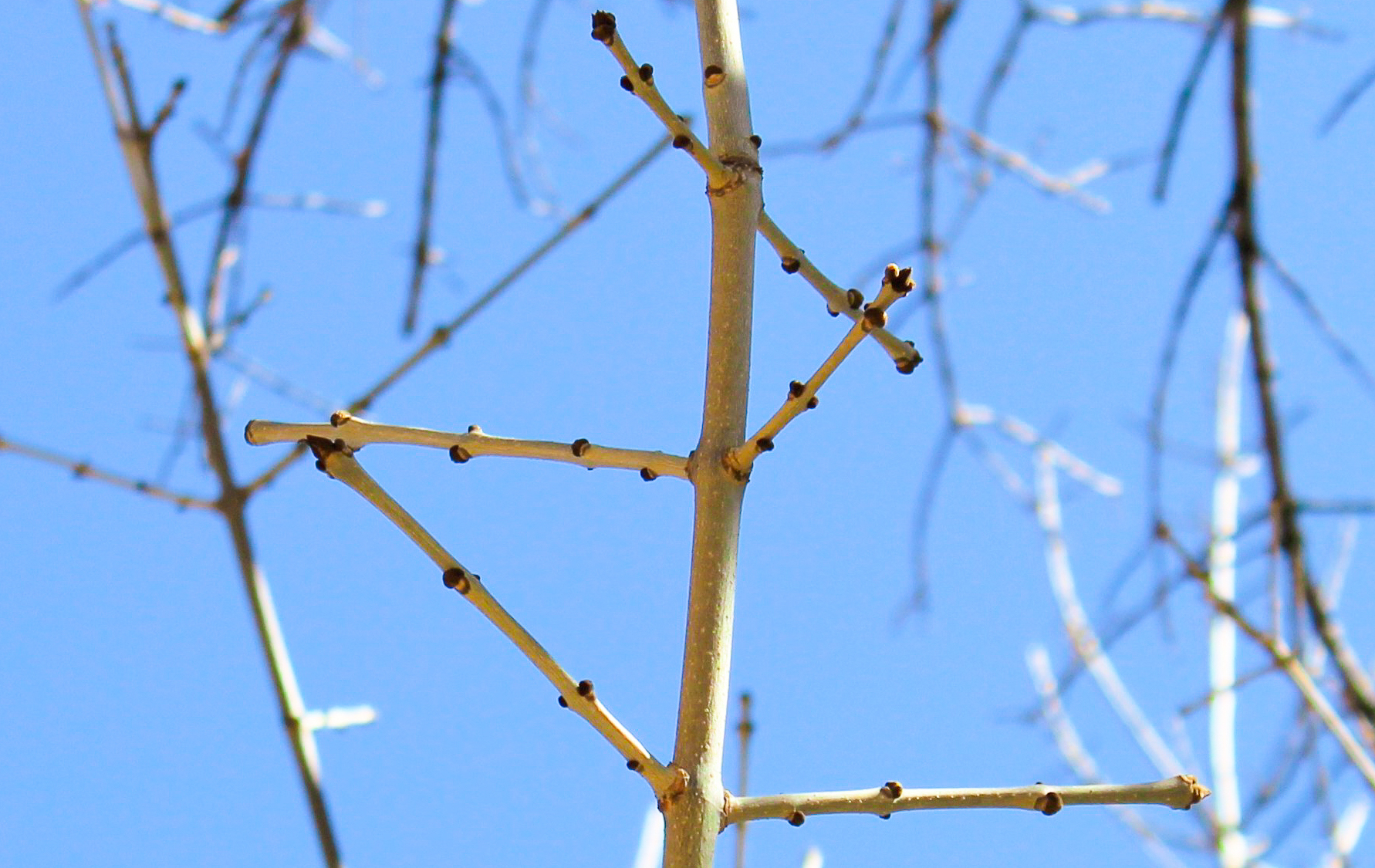
Each branch has a large singular bud at the very tip.
Beech Trees
Beech tree buds are often easy to spot.
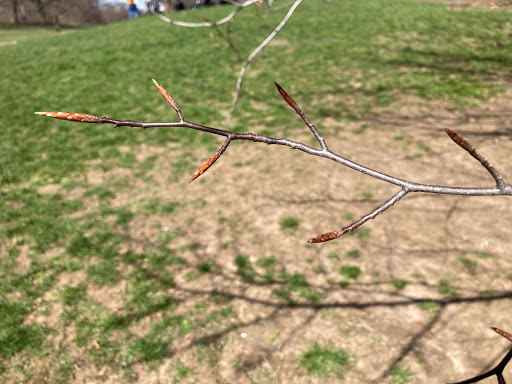
Many species have buds that are about an inch long and extremely pointed.
Branch Patterns
The look of the branches provide additional ways to identify certain trees. Branches and twigs of trees grow in specific patterns. Knowing these patterns can be a valuable tool in tree identification.
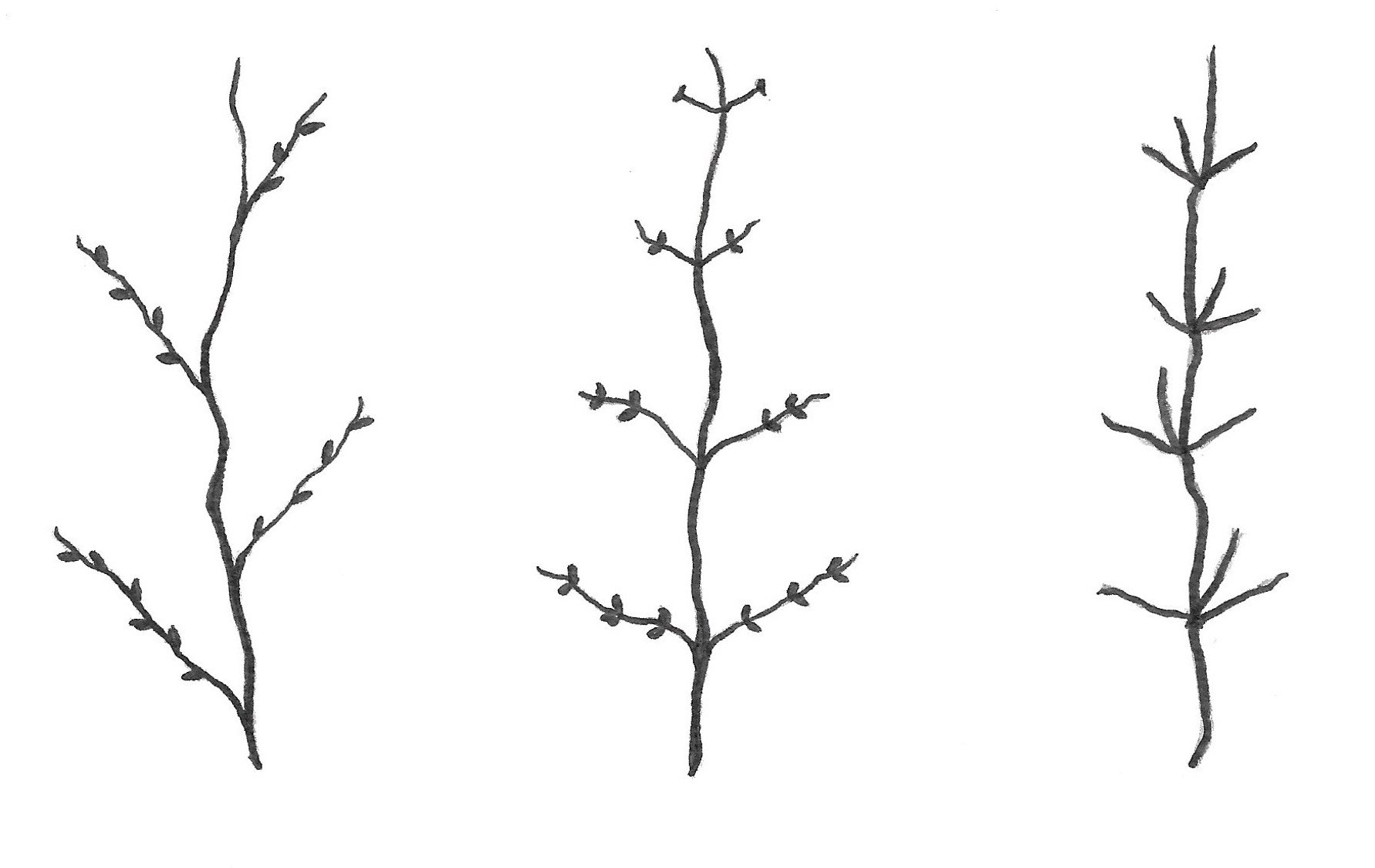
In an alternate pattern (left), the twigs are staggered along each side of the branch; in an opposite pattern (center), the twigs are directly across from each other on each side of the branch. Some trees even have whorled branching (right), in which three or more twigs come out of the same place on the branch.
On most trees, branches and twigs grow in an alternate or opposite pattern:
Alternate Branching
With alternate branching, only one twig grows at each node on a branch, and the twigs alternate!
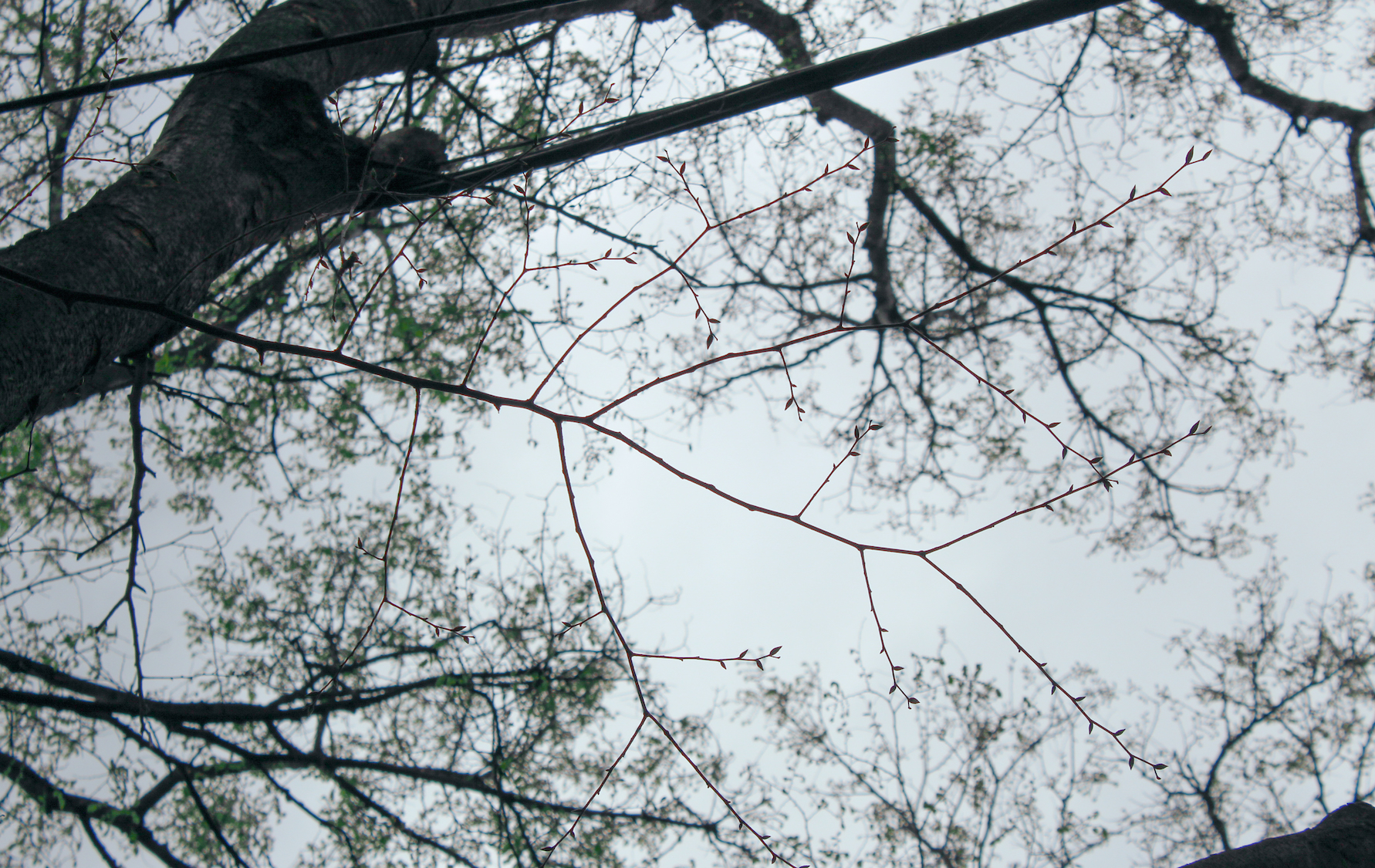
The American elm tree is just one of many tree species with alternate branching.
Opposite Branching
Trees with opposite branching have two twigs growing across from each other. In other words, every twig grows in a pair.
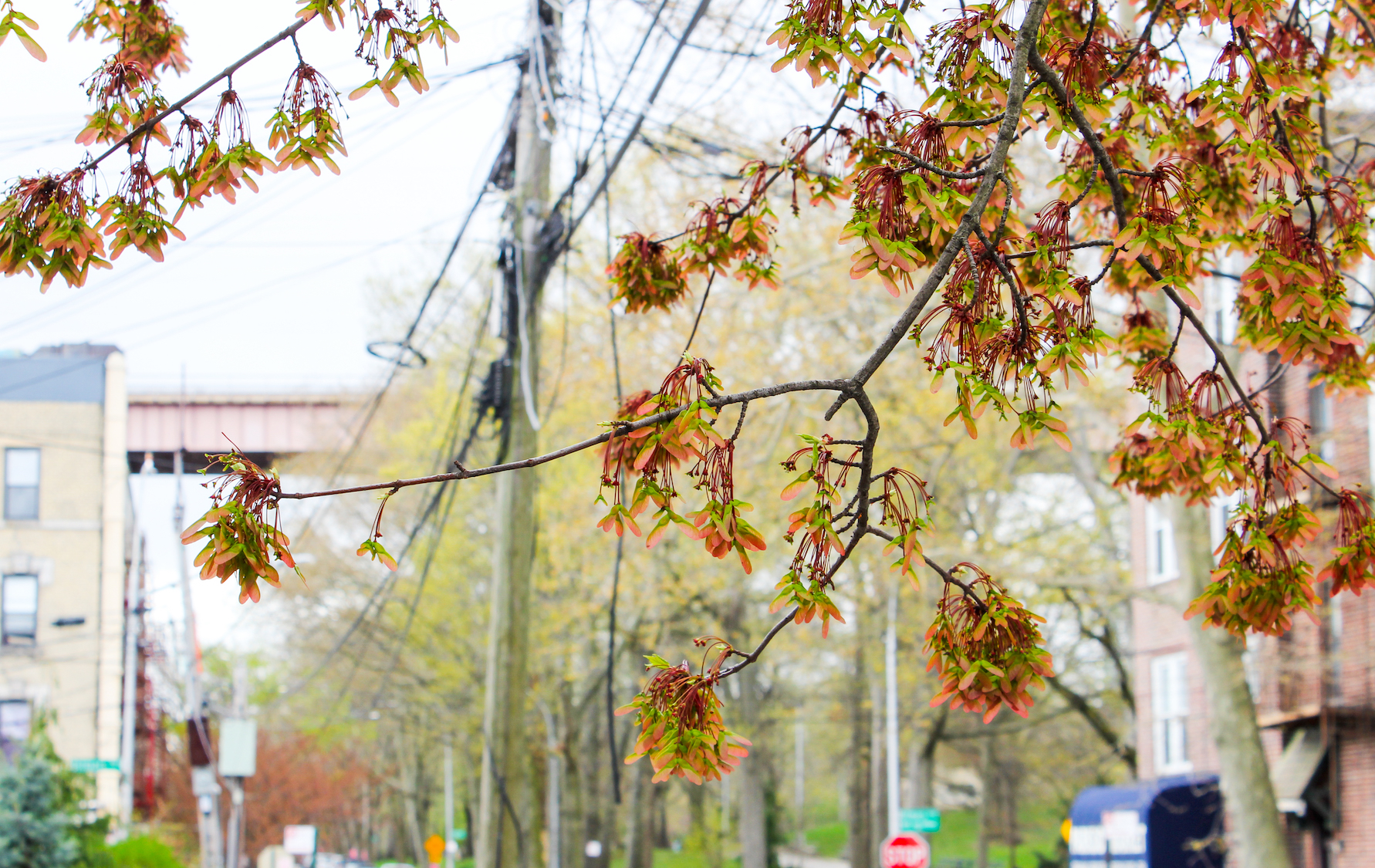
Opposite branching is less common in trees native to NYC — there are only four! These trees are ash, dogwood, box elder, and maple, like this red maple tree shown above.
Whorled Branching
Trees with whorled branching have three or more twigs that grow from one point.
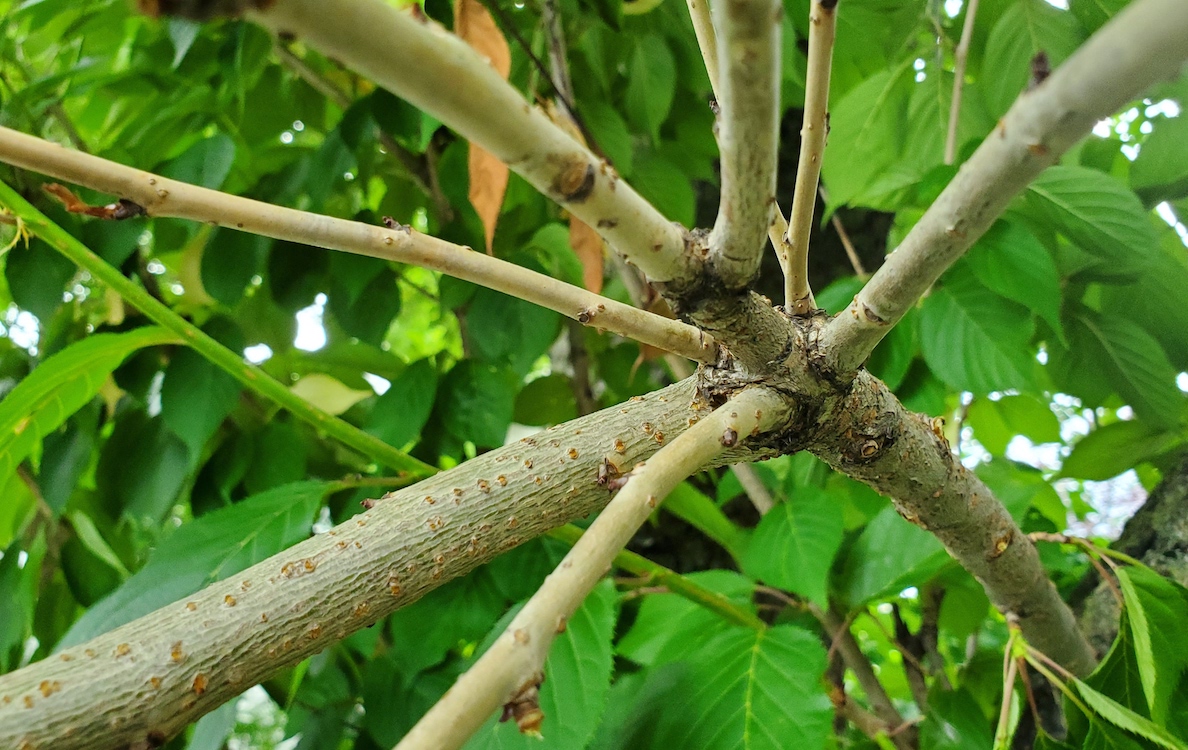
The Northern Catalpa tree is one of the few tree species in New York City with whorled branching.
Silhouette
The silhouette of trees is especially easy to see when branches are bare of leaves.
Weeping Willow Trees
The distinctive “weeping” silhouette of some willow trees is easy to spot in winter.
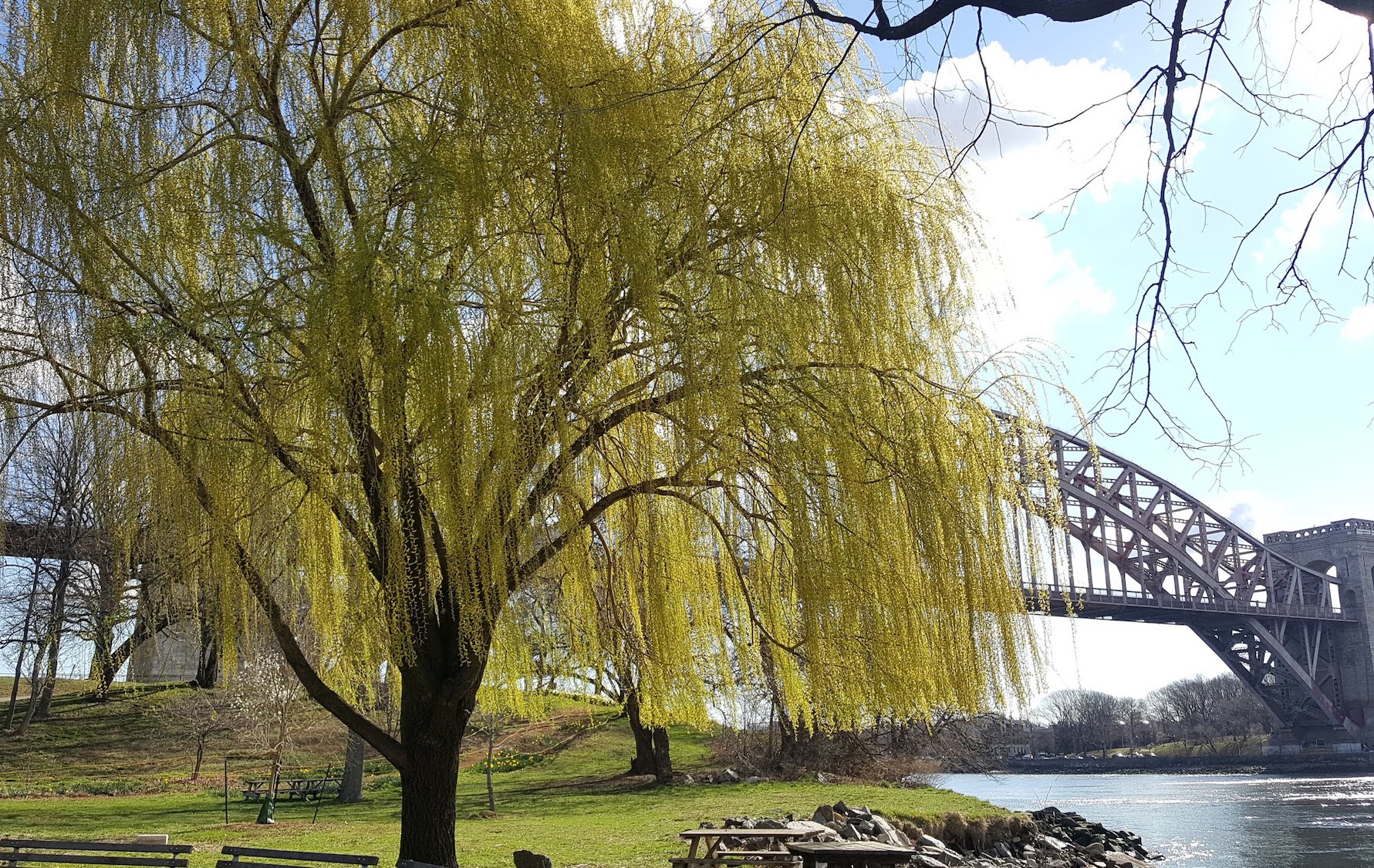
The leafless branches of willow trees are often a pale yellow — adding a sunny pop of color in the winter landscape.
Bald Cypress Trees
As an evergreen that actually loses its leaves, the bald cypress stands out from its conifer siblings who keep their needle-like leaves all year long.
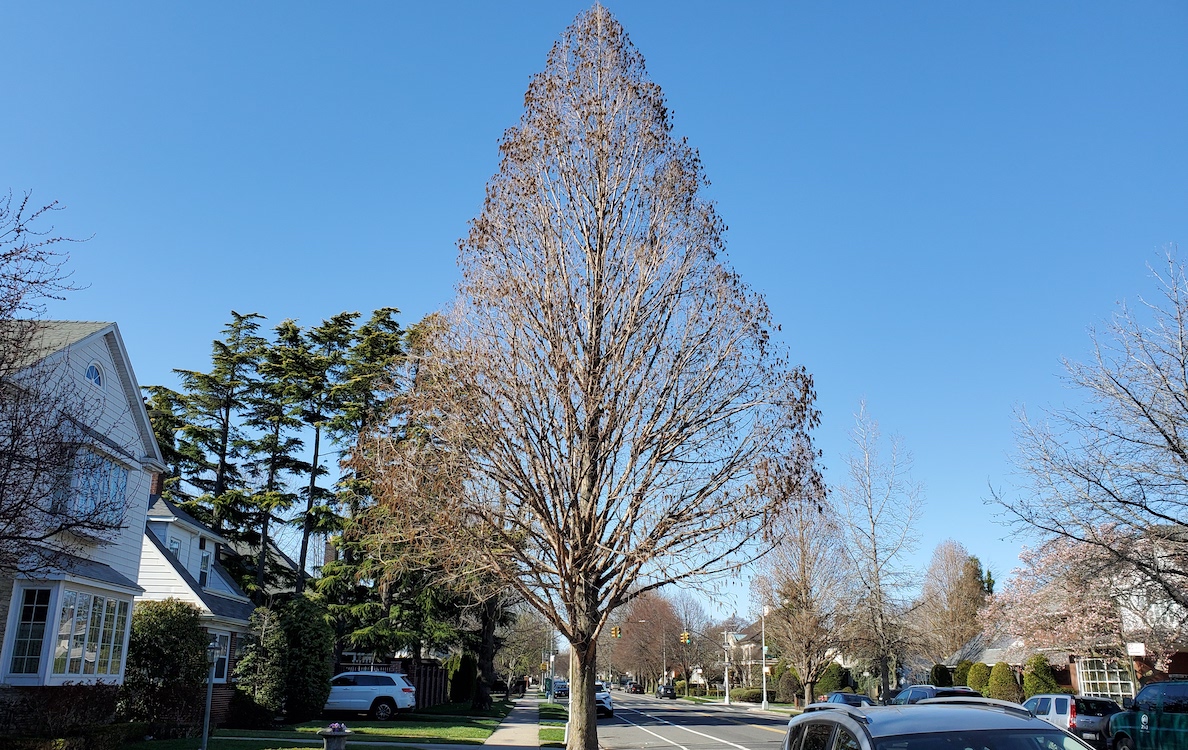
Bald cypress trees have a cone-like shape and a single, long trunk with a wide base.
When bald cypress trees are near water, they often grow woody stubs called “knees”.
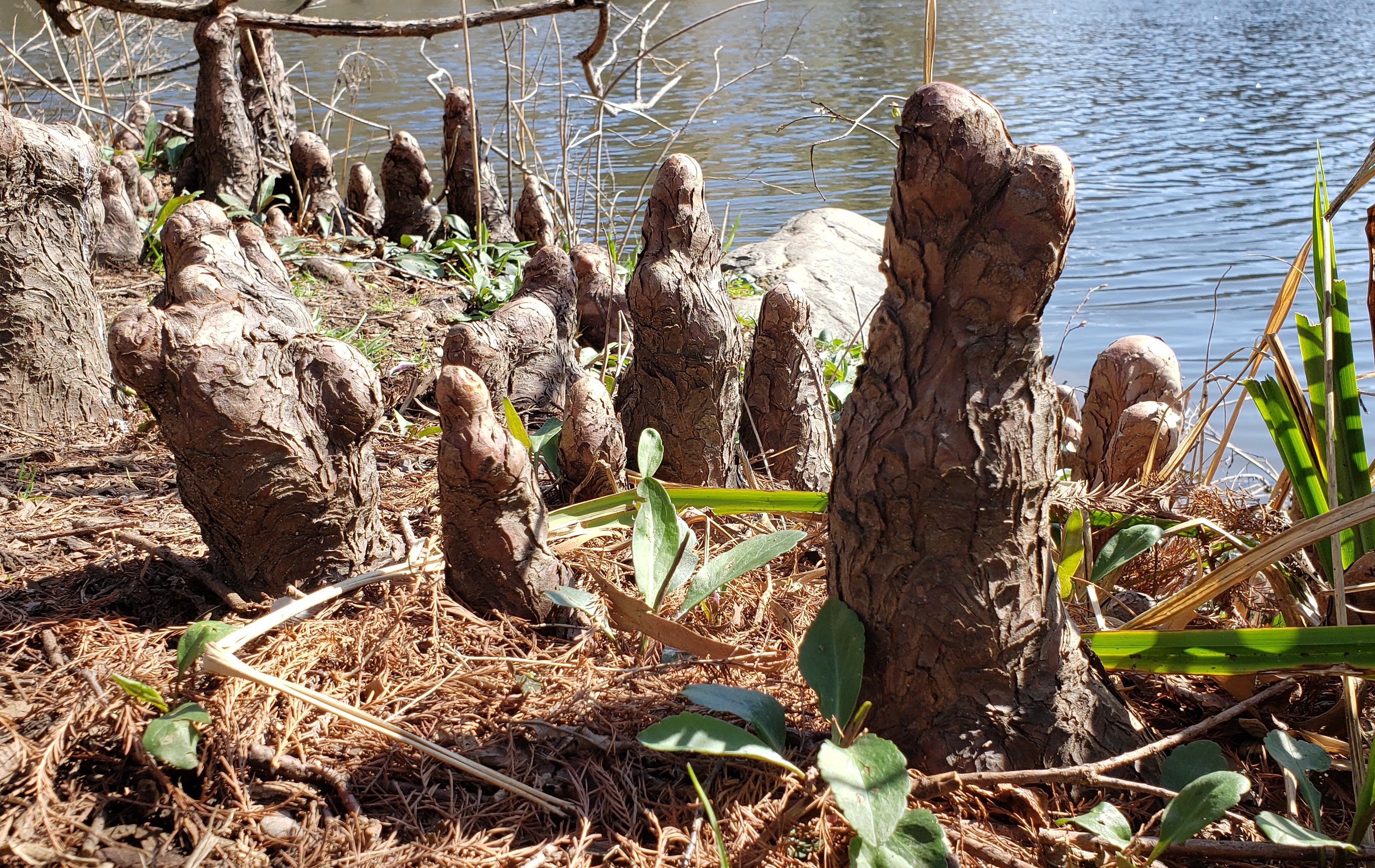
The purpose of these knees are still a mystery, but experts theorize that they might help with gas exchange, soil erosion, tree anchoring, or some combination of all three.
Other Tree Features To Look For
While the buds, branches, barks, and silhouettes of trees are used across all tree species to identify trees, some trees have special features that make them even more distinct. Other things you might observe on branches, like seed pods, flowers, or old leaves, can provide important clues about a tree’s identity. Let's take a look:
Seeds and Spikes
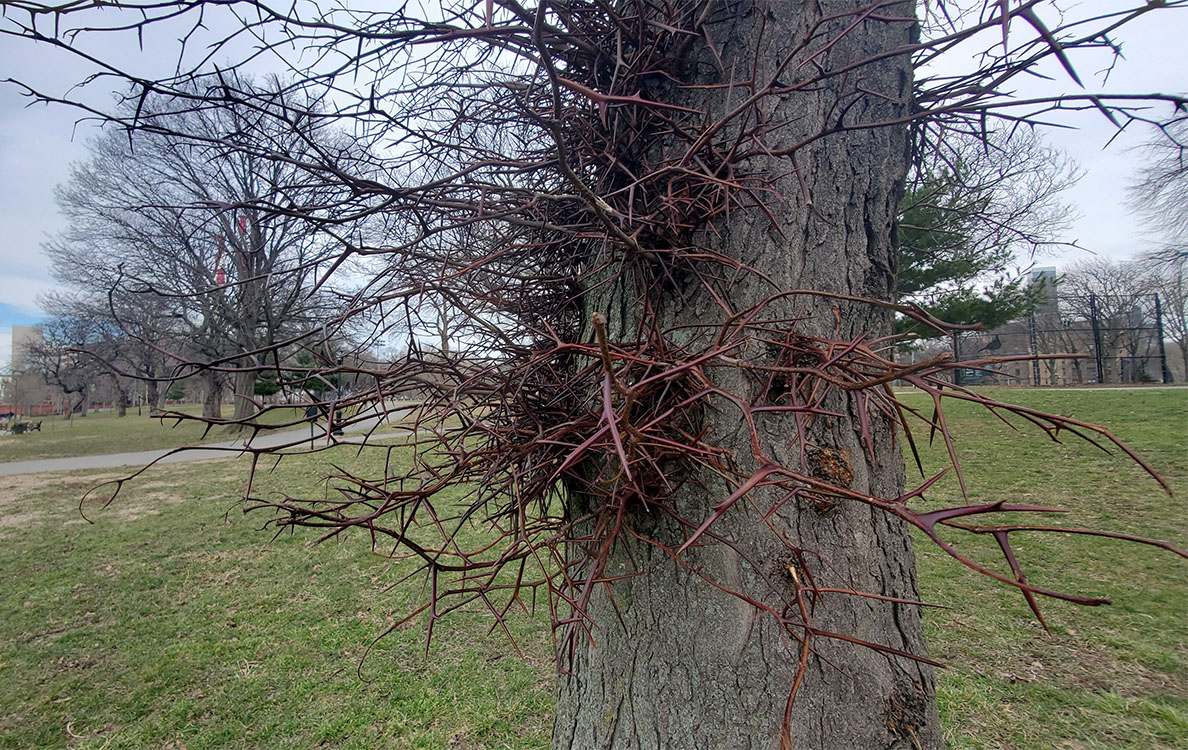
Honey locust trees have two very distinctive features for easy identification — seeds and spikes. The seeds of the locust trees resemble long, brown bean pods and hang off the tree for most of winter. Along the trunk, locust trees have long, sharp thorns. The lower thorns are often removed for safety, so you may have to look higher up the tree to spot some.
Dried Fruit on Tulip Trees
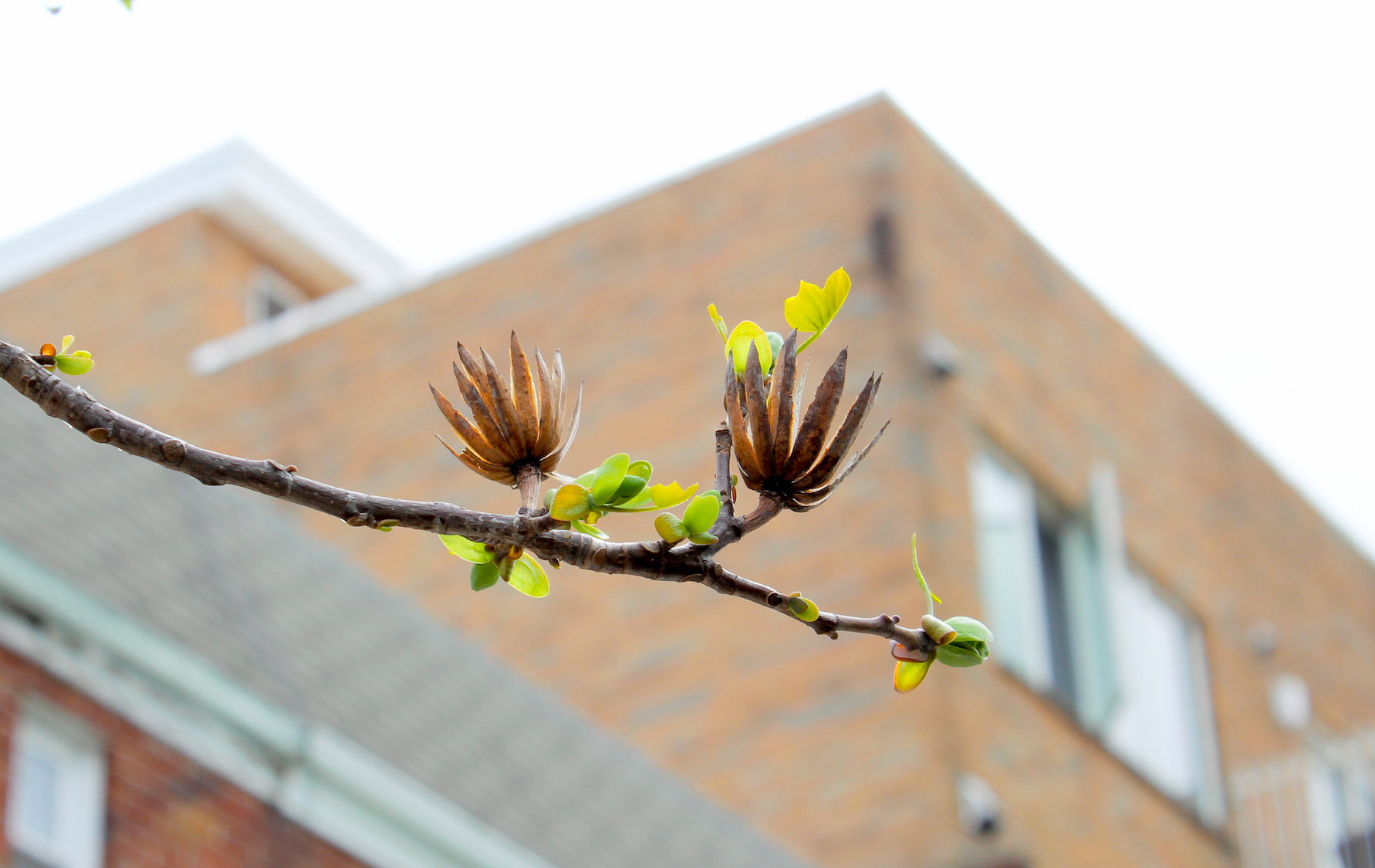
This species of poplar tree gets its name from the yellow and orange flowers that bloom in the spring. In the winter, the upright and dry fruit of the tulip tree remains on the branch, giving the appearance of flowers on the tree.
Autumn Leaves in Winter
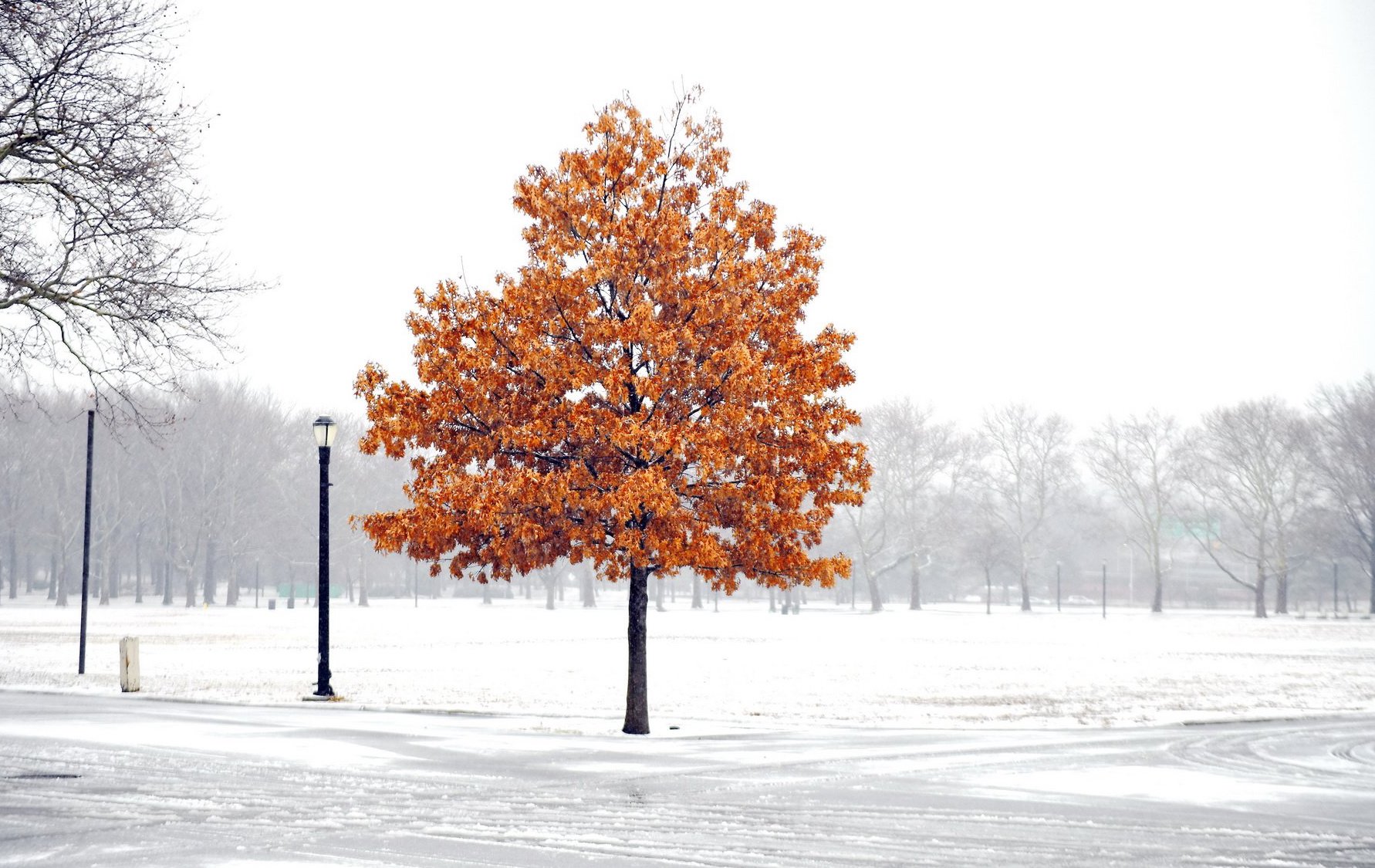
The easiest trees to identify in winter, are the ones that hold onto their leaves. Many species of oak tree — like this swamp white oak — will do just that. This is especially common in younger oak trees.
Flowers
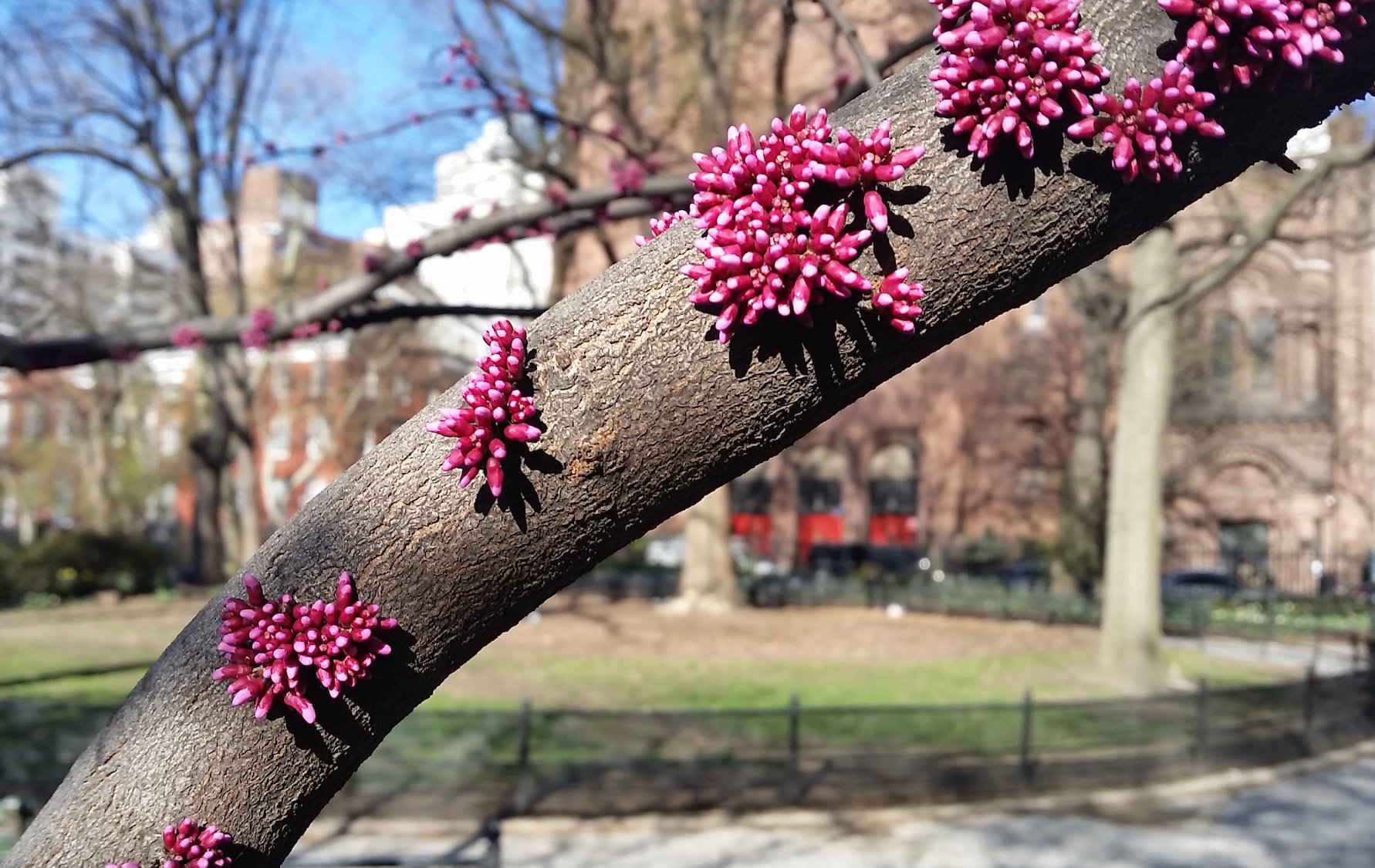
The eastern redbud tree has a unique feature — its flowers bloom right on the trunk! These buds appear in late winter (around mid-March) then blossom come early spring.
Ready to Go Exploring?
Watch our Tree ID Walk in Astoria Park, then test your new skills! There are millions of trees in the parks and streets of New York City for you to practice! Use the New York City Street Tree Map to see which species are near you and check your work. You’ll also find tips on how to care for trees and keep our urban forest healthy!
